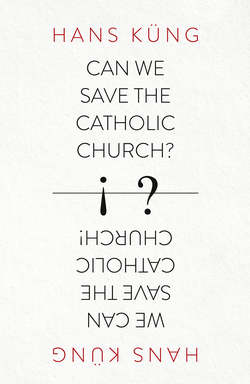Читать книгу Can We Save the Catholic Church? - Hans Kung - Страница 12
The Failed Restoration Policies of Two Popes
ОглавлениеIt never ceases to astonish me how even secular contemporaries who do not consider themselves part of the Church and aesthetically minded intellectuals allow themselves to be dazzled by the return of Baroque splendour and impressively staged papal liturgies used by Rome to demonstrate the presence of a strong Church and the undisputed authority of the pope. All this religious magnificence, however, cannot disguise the fact that the restoration policies of John Paul II and Benedict XVI failed in the areas that count the most. All the papal appearances, journeys and teachings have not been able to change the opinions of most Catholics on controversial questions or to convince them to toe the Roman line. Even papal youth rallies, attended for the most part by conservative charismatic groups and promoted by traditionalist organizations, have failed to slow the numbers of people leaving the Church or to increase substantially the number of candidates for the priesthood. Even in the diocese of Rottenburg-Stuttgart, commonly considered to be broad-minded and appreciative of grassroots initiatives, 17,169 deeply disappointed Catholics, i.e. 0.9 per cent of the total membership, left the Church between January and mid-November 2010.
This progressive erosion of the Church, sketched above, has accelerated over the past three decades. However, despite all complaints and lamentations, the process is largely accepted as irreversible and irremediable, reflecting the will of God (or perhaps only of the pope?). Only relatively recently has the world at large been awakened by the growing numbers of abhorrent sexual scandals, in particular the abuse of thousands of children and adolescents by Catholic clergymen in the United States, Ireland, Belgium, Germany, the United Kingdom and other countries. And the revelation of how these cases of abuse have been handled by the hierarchy has resulted in an overall crisis of leadership and confidence, the like of which has never been seen before in the Church.
We cannot ignore the fact that the system devised to conceal clerical sexual misbehaviour and then set in motion all over the world was led by the Roman Congregation for the Doctrine of the Faith, headed by Cardinal Joseph Ratzinger from 1981 until 2005. Under John Paul II, reports of cases were already being collected by the Roman Congregation under the cloak of strict confidentiality. As late as 18 May 2001, Ratzinger sent a formal letter (Epistula de delictis gravioribus) to all bishops. According to this letter, cases of abuse were to be classed as secretum pontificium – a pontifical secret. Thus, those who made the abuse public – rather than the abusers themselves – were threatened with the most dire church sanctions. That letter has still not been retracted.
Many people rightly demand a personal mea culpa on the part of the then prefect of the Congregation for the Doctrine of the Faith, Joseph Ratzinger. But, regrettably, he missed the opportunity to do so in Holy Week of 2010. Instead, in an unprecedented and embarrassing ceremony on Easter Sunday, staged before the beginning of the solemn Easter Mass, he let Cardinal Angelo Sodano, formerly Cardinal Secretary of State and Dean of the College of Cardinals, attest to his innocence urbi et orbi. This scandalous ceremony was all the more shameful because Sodano himself had come under public criticism for his personal embroilment in the scandal. Although Benedict XVI has repeatedly voiced his regret about the abuse, he has remained silent about his own personal responsibility for its cover-up, just as many other bishops have remained silent about their own similar roles. Not even in his recent book Light of the World did Ratzinger offer any comment on his role in the affair. This is not a mere coincidence; it is part and parcel of the overall structure.
